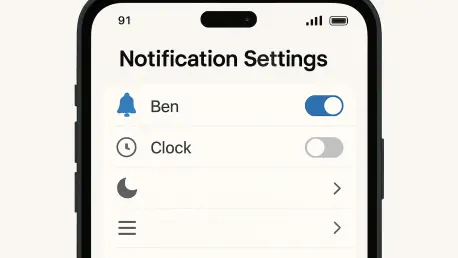In an era where smartphones are virtually an extension of daily life, understanding how people handle the constant influx of notifications offers a fascinating glimpse into modern behavior, and a recent poll has uncovered intriguing patterns in how users manage their phone ringer settings. This reveals a complex balance between staying connected and avoiding disruption. Far from a one-size-fits-all approach, the findings highlight diverse preferences and habits that shape the way individuals interact with their devices. From opting for silent modes to customizing audible alerts, the spectrum of choices reflects both personal needs and evolving technology. This exploration into notification management not only underscores the adaptability of users but also points to potential areas for improvement in smartphone design.
Diverse Approaches to Ringer Settings
The poll paints a striking picture of user behavior, with only about a quarter of participants keeping their phone ringer active at all times. This suggests that the majority lean toward alternative ways to stay alerted, often prioritizing discretion over constant sound. An almost even split exists between those who rely on vibrate mode continuously and those who adjust settings based on their surroundings, such as turning on the ringer in noisy outdoor environments to avoid missing important calls. Interestingly, the traditional physical switch for toggling ringer modes is becoming less common as newer devices shift toward software-based controls. This transition, while innovative, may challenge users accustomed to tactile adjustments, indicating a shift in how notification management is integrated into daily routines. The variety in these preferences showcases a broader trend of flexibility, where situational awareness plays a key role in determining how users choose to be notified.
Automation and Wearable Tech Trends
Another layer of sophistication emerges with the growing use of automation to handle ringer profiles, as some users program their devices to switch to silent mode during nighttime hours for uninterrupted rest. Meanwhile, a smaller segment—less than 10% of respondents—has turned to smartwatches or fitness bands as their primary notification tools, effectively bypassing the need for phone sounds altogether. This reliance on wearable technology highlights an emerging preference for seamless integration across devices. However, not all solutions are without flaws; feedback reveals frustration over vibration strength, often perceived as too weak to be effective. Such dissatisfaction could hinder wider adoption of vibrate-only modes if left unaddressed by manufacturers. These insights into automation and alternative devices demonstrate how users are leveraging technology to tailor their notification experience, while also pointing to gaps that future innovations might fill.
Personalization in Audible Alerts
Among those who opt for audible notifications, personalization takes center stage, with nearly half selecting custom ringtones to reflect their individuality. These choices often include favorite songs that are regularly updated or nostalgic tones reminiscent of older devices, holding onto a sense of familiarity. In contrast, a majority stick with manufacturer-provided sounds, with a noticeable 3:2 ratio between those who actively select a preloaded tone and those who accept the default without change. This divide illustrates varying levels of engagement with device customization, where some users view their phone’s sound as an extension of their personality, while others prioritize simplicity. The trend toward tailored audio alerts underscores a desire for control over how notifications are perceived, revealing deeper insights into user priorities. As smartphone interfaces continue to evolve, accommodating such personal touches remains a key aspect of enhancing user satisfaction.
Reflecting on Notification Evolution
Looking back, the diverse habits surrounding phone ringer management showcase a remarkable adaptability among users who navigate the challenges of staying connected without constant interruption. The balance between silent, vibrate, and audible modes, coupled with automation and wearable tech, paints a picture of nuanced decision-making driven by context and preference. Dissatisfaction with aspects like vibration strength and the phasing out of physical switches also highlights areas where past designs fall short of expectations. Moving forward, manufacturers could address these concerns by refining haptic feedback and exploring intuitive control options. Encouraging further customization and integrating cross-device solutions might pave the way for a more seamless experience. These reflections on user behavior offer valuable lessons, urging the tech industry to prioritize user-centric innovations in the ongoing evolution of smartphone functionality.









